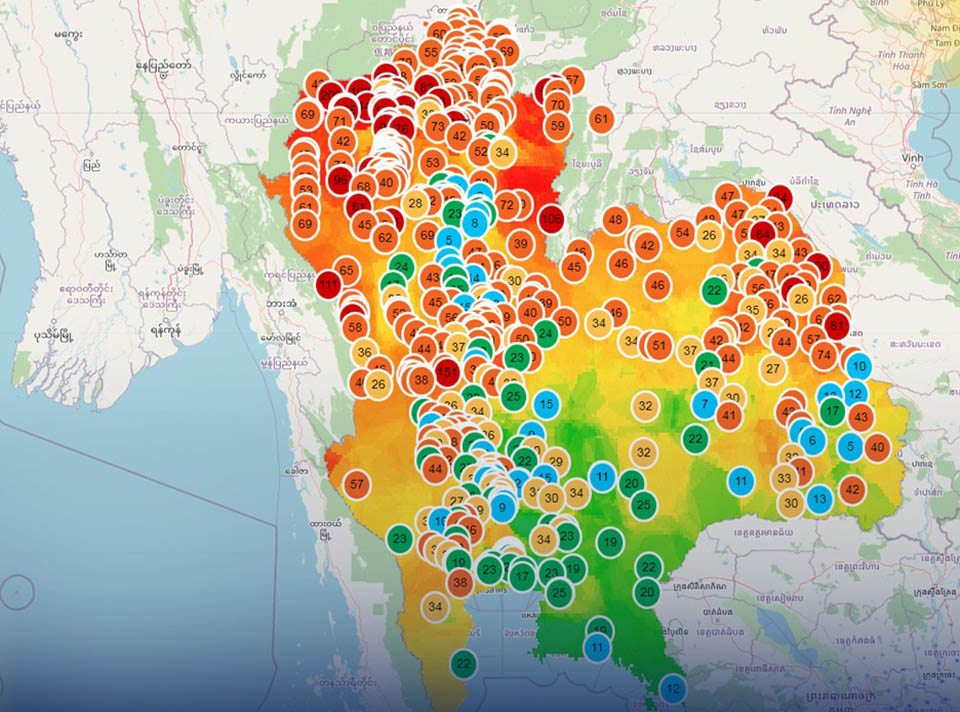
Nineteen provinces across northern and northeastern Thailand are currently experiencing slightly unsafe air quality due to elevated levels of PM2.5, as reported by the Geo-Informatics and Space Technology Development Agency. The update provided on Tuesday (Apr 16) showed the highest recorded level of PM2.5 was 47.6 micrograms per cubic meter (µg/m³) in Mae Hong Son, surpassing the safe threshold of 37.5 µg/m³.
The affected provinces include Mae Hong Son, Chiang Mai, Lamphun, Nong Khai, Nakhon Phanom, Udon Thani, Lampang, Bueng Kan, Loei, Phayao, Sakon Nakhon, Tak, Kalasin, Chiang Rai, Nong Bua Lam Phu, Nan, Roi Et, Chaiyaphum, and Mukdahan, all of which have recorded PM2.5 levels between 37.9 and 47.6 µg/m³. These levels are considered initially unsafe for health.
In contrast, the southern province of Krabi showcased the best air quality in the country with a PM2.5 level of only 12.1, followed by Samut Sakhon with 20.0. Seasonal factors such as wildfires, agricultural burning, and emissions from vehicles and factories, worsened by hot and dry conditions, have contributed to the poor air quality.
The situation has been particularly dire in Chiang Mai, which has recorded the poorest air quality globally on several occasions recently. Local authorities are responding with additional measures to manage the pollution sources and provide necessary aid to affected communities. (NNT)








